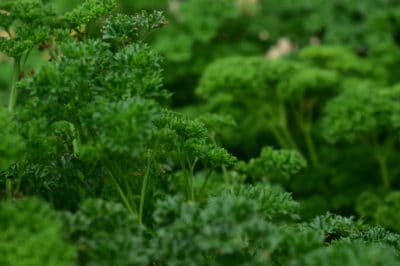herb garden in semi-shade
The selection for a semi-shaded herb garden is still very large, whereby you can fall back primarily on native species. But even some varieties of Mediterranean herbs tolerate a light semi-shade — so a look at a variety label can be worthwhile. However, we recommend these herbs in particular for cultivation in semi-shade:
- various mint types (e.g., peppermint, orange mint, broom mint, curly mint, etc.)
- domestic kitchen herbs like parsley, chives, chervil, meadowsweet, lovage, and dill
- wild herbs like meadow button, meadow foam herb, bear’s garlic, or woodruff
- marigold flowers and scented violets
herb garden in the shade
There is also a small selection of herbs for the deep shade, which grow mainly in forests and are therefore naturally dependent on rather little light. These include watercress, wood sorrel, bear’s garlic, garlic rocket, and field horsetail. Lush green peppermint, which can reach a height of 31 inches, also thrives well in the shade. But beware: the species listed above tend to spread too wildly and must therefore be hindered in their urge to expand. By the way, a location is a shaded place if it is exposed to the sun for less than four hours a day.
requirements to the floor
Herbs that thrive in semi-shade or shaded places have some demands for nutrients. Before planting, mix the garden soil (which should be as humus or loamy as possible) with plenty of compost. This serves as a nutrient supply and improves the water retention capacity of the substrate. Treat your herbs to a good shovel of compost as fertilizer twice a year. Alternatively, you can also use horn shavings or other slow-flowing fertilizers. In addition, always ensure that the soil is slightly moist.
Hint
Wherever a fragrant green area is in a shady place instead of a lawn, you can fall back on carpet-forming mint. The carpet pole mint, which even tolerates kicks, is very suitable, for example.
